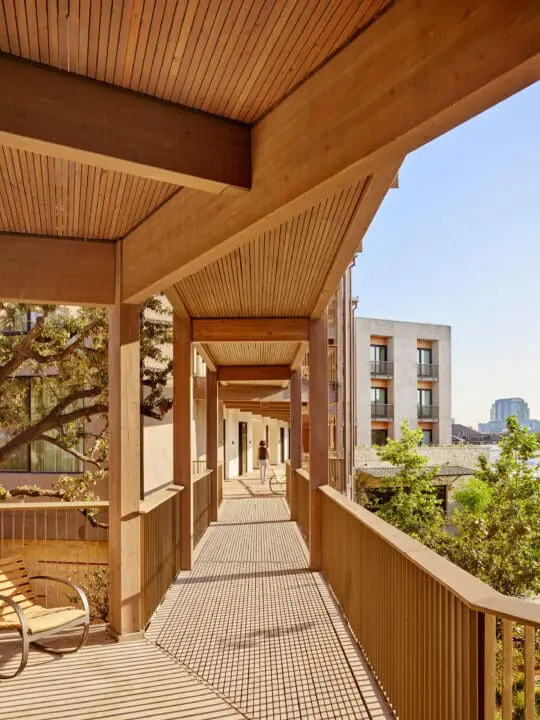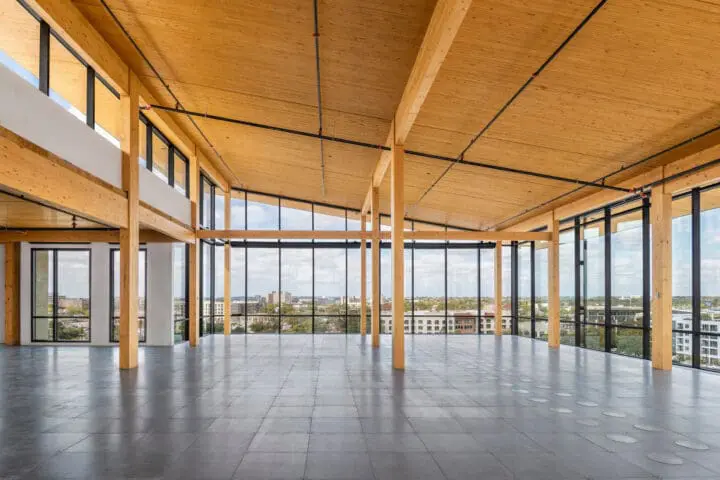
Investigation: Mass Timber End of Life Scenarios
Mass timber construction has been recognized as a significant tool for combating climate change and supporting the global push for circular economies by creating building stock that also serves as a carbon sink. Beyond these initial benefits, as an inherently lightweight and modular system, mass timber also has high potential for reuse to extend these carbon benefits. This research paper catalogs examples of wood and mass timber reuse in historic civilizations to inform best practices for designing mass timber structures to maximize reuse potential. Additionally, this paper considers methods for accounting for biogenic carbon as part of a Life Cycle Assessment (LCA) and provides recommendations for supplementary tools that can be used to account for reuse scenarios.
March 14, 2025 | Posted by Allison Peitz
Mass Timber
Mass timber provides opportunities for climate change mitigation because wood can extract carbon from the atmosphere as it grows and retains this carbon, termed biogenic carbon, within its fibers throughout its lifespan. This ability to store carbon counteracts the typical flows of emissions into the atmosphere to delay the impacts of global warming. These beneficial impacts are optimized if mass timber elements can be reused or re-purposed, therefore retaining carbon for a longer period.

When considering end-of-life scenarios, it’s important to understand that not all reuse outcomes are comparable. In line with the concept of cascading, the highest and best use of a mass timber product should be maintained as long as possible. The possible end-of-life scenarios for mass timber exist along a spectrum as shown.